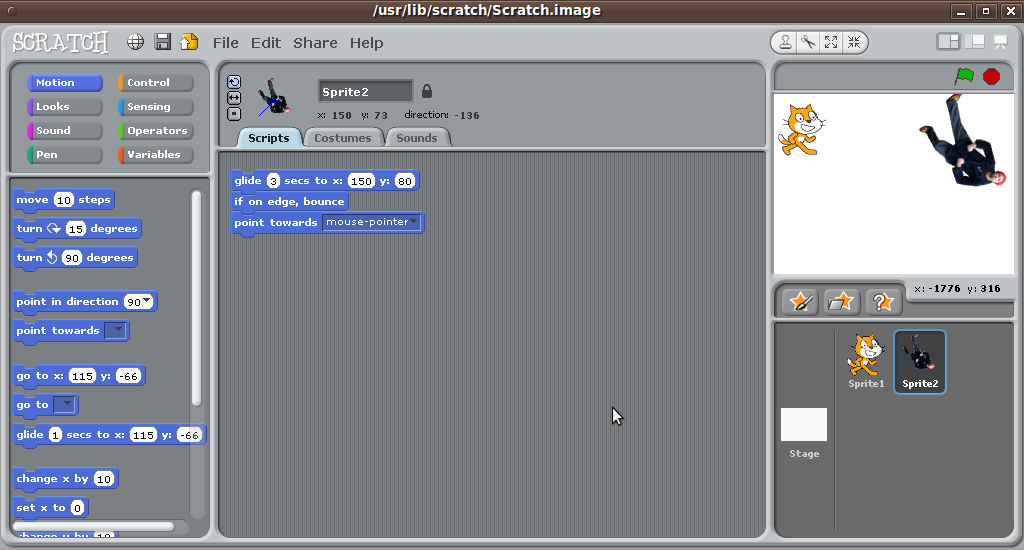F/OSS and Writing IV: Design As Expression
In his article “Imagine > Invent > Program > Share: A Library-Hosted Computer Club Promotes 21st-Century Literacy Skills,” librarian Brian Myers shows the impact of free and open source technology on digital literacy in children through the exploits of the Wilmette, Illinois, library's Game Design Club. The Club is still active as of this writing and now sponsors a Game Maker Academy, in which students receive several F/OSS tools on a CD (including Scratch, GIMP, and Anvil Studio) and create games over the course of five weeks. Myers' article discusses several programs created through Scratch, an educational programming language; these programs include a dynamic electoral vote tracker for 2008 election results and a live bracketing program to track the status of competitors in a Super Smash Brothers Brawl tournament held at the library. Myers refers to tools such as Scratch and Alice as transitional tools or ‘tools to think with’
and further explains that “The experience of making objects move on-screen within a geometric framework, respond to user input, and interact with other dynamic system elements creates a foundation of experience that makes higher-level math and physics concepts seem less abstract or foreign when encountered in the classroom” (9). According to Myers, then, educational programming languages and software help bridge a gap between the time when a student knows nothing about a concept and the time he or she learns about it in the classroom. These transitional tools bridge the gap by providing a context for understanding that the student otherwise would have lacked. For example, a student who has worked with geometric shapes in software programs is more likely to understand concepts presented in a geometry course.

Free and open source programs can play an important role in early development of digital literacy not only because of their affordability, but also because of their flexibility. Programs such as OpenOffice, GIMP, and the popular sound recording tool Audacity can be installed at home, in the library, or in a school’s computer lab for no cost. Students who use these programs in any of these places can also download portable versions that can be stored on a USB flash drive or accessed online, greatly expanding the number of access points. Many theories of learning argue that play is one of the most important facets of learning for many individuals; this theory is borne out in training programs that simulate situations in which users would have to apply learned skills for survival or advancement. Free and open sources programs provide an affordable and flexible playground for the development of digital literacy. Libraries are an important “bridge” between a child's home life and school life, so they are worth examining as a place for students to acquire digital literacy.
Another advantage to free and open source software is that their development is community-based, allowing for unfettered collaboration with developers and expert users of the software to facilitate learning. Those who don't know about OpenOffice's best features can ask an entire community of OpenOffice users and developers, making the community an excellent learning tool. Users can also suggest changes and additions to future versions based on their needs. The availability of the developer community to educate users about the product is a valuable tool for educators.
Previous: F/OSS and Writing III: Coding as Writing Next: Conclusion
